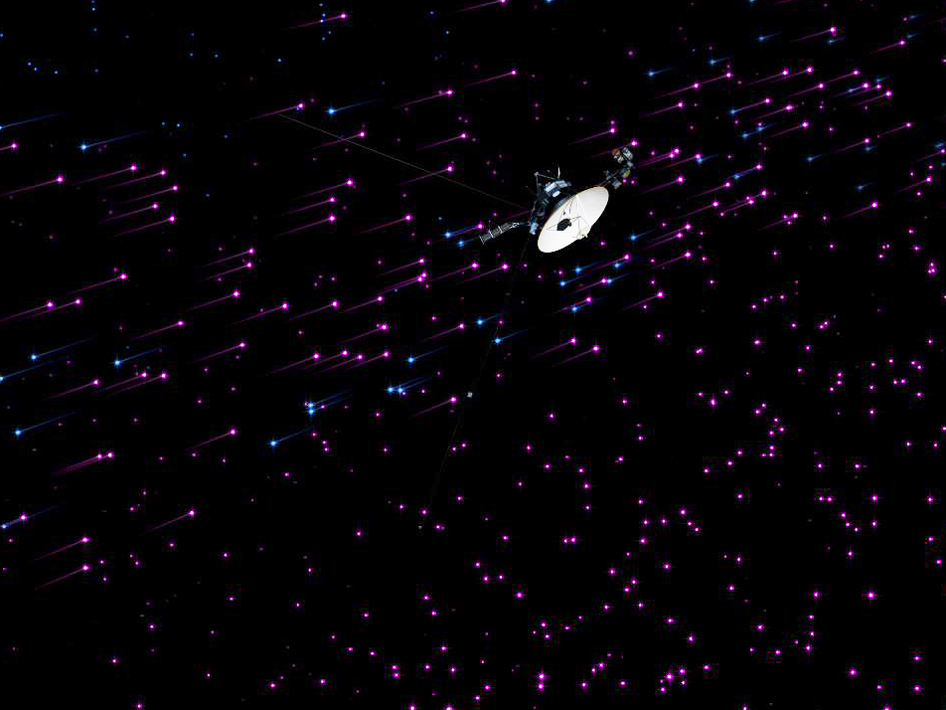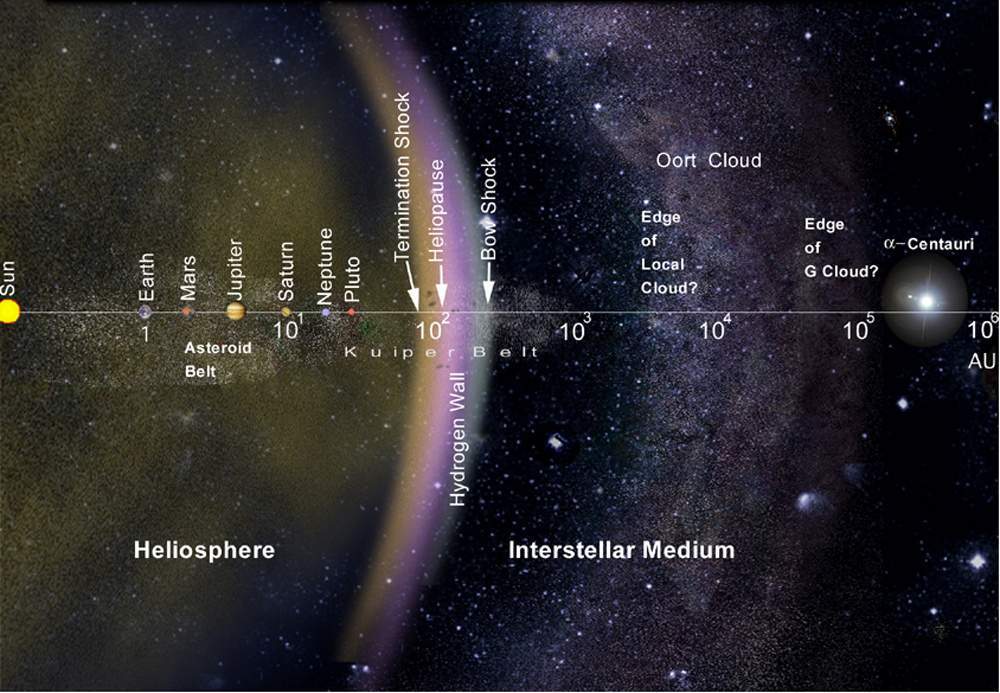When I think of Voyager 1 and 2 robotic spacecraft it takes me back to a 1966 song written by John Denver, “Leaving on a Jet Plane.” I don’t know why but the specific lyric “don’t know when I’ll be back again” comes to mind.
Both these two robotic spacecraft have unlocked the mysteries of the Gas Giants in the outer Solar System. But like the little engines that could, the Voyagers continue to operate 36 years after launch.
But the news this week is about Voyager 1. Designed for the Grand Tour of the outer planets and the first spacecraft to give us a detailed view of the Jovian and Saturnian systems, today Voyager 1 is 19 billion kilometers (12 billion miles) from the Sun moving at a speed of 56,000 kilometers (35,000 miles) per hour and heading in the direction of the nearest star to us, Proxima Centauri.
Most of Voyager’s on board data collectors have been shut down to conserve the spacecraft’s energy resources. But we continue to receive a 23-watt radio signal from it (equivalent to the power of a refrigerator light bulb) which takes more than 17 hours to reach us here on Earth.
Voyager 1’s mission began with initial approval in 1972. It took four years to build. The spacecraft contained more than 65,000 discrete parts including millions of transistors. Launched on September 5, 1977, it rendezvoused with Jupiter in 1979 and Saturn in 1980. With the official end to its primary mission NASA extended the mission to continue to monitor its progress as Voyager moved further out from the Sun. Now it has become the first human built object to venture beyond the Solar System into interstellar space. In 2004 Voyager crossed the Termination Shock, also known as the Heliopause, the edge of the bubble created by matter and plasma blown out from our Sun into surrounding space. And now it’s official. Scientists still following Voyager’s path have for the first time detected the sound of interstellar space created by waves of plasma particles striking it as it flies beyond the Heliopause and out of the Solar System, never to be back again.
So that’s why I was thinking about John Denver and “Leaving on a Jet Plane” when I read about Voyager 1 this week, about a spacecraft that continues to speak to us from a distance far away in space, alone on a 40,000-year voyage to the stars.
All my bags are packed I’m ready to go
I’m standin’ here outside your door
I hate to wake you up to say goodbye
But the dawn is breakin’ it’s early morn
The taxi’s waitin’ he’s blowin’ his horn
Already I’m so lonesome I could die
So kiss me and smile for me
Tell me that you’ll wait for me
Hold me like you’ll never let me go
Cause I’m leavin’ on a jet plane
Don’t know when I’ll be back again
Oh baby, I hate to go
There’s so many times I’ve let you down
So many times I’ve played around
I tell you now, they don’t mean a thing
Every place I go, I’ll think of you
Every song I sing, I’ll sing for you
When I come back, I’ll bring your wedding ring
So kiss me and smile for me
Tell me that you’ll wait for me
Hold me like you’ll never let me go
Cause I’m leavin’ on a jet plane
Don’t know when I’ll be back again
Oh babe, I hate to go
Now the time has come to leave you
One more time let me kiss you
Close your eyes I’ll be on my way
Dream about the days to come
When I won’t have to leave alone
About the times, I won’t have to say
So kiss me and smile for me
Tell me that you’ll wait for me
Hold me like you’ll never let me go
Cause I’m leavin’ on a jet plane
Don’t know when I’ll be back again
Oh baby, I hate to go










